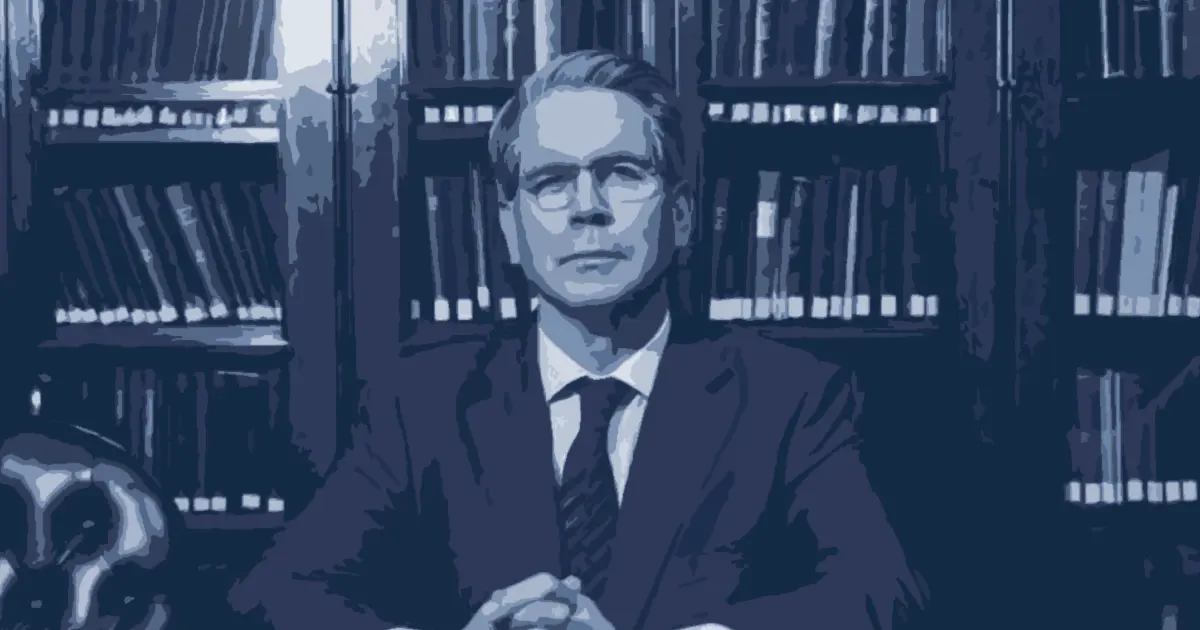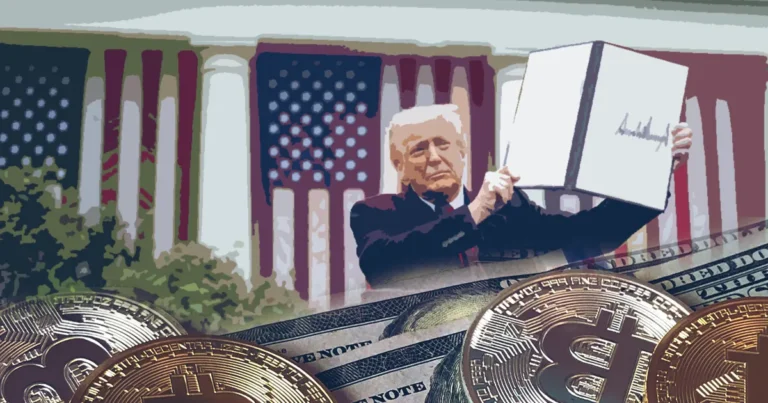3-4-2025 – U.S. President Donald Trump’s recent declaration of a national emergency and sweeping tariffs has sent shockwaves through the cryptocurrency world. Announced on April 2, 2025, from the White House Rose Garden, the bold policy slaps a baseline 10% tariff on imports from all countries starting April 5, with steeper rates for major players like China (34%), the European Union (20%), and Japan (24%). While the crypto market initially flickered with hope, it quickly plunged into chaos. Yet, amid the turbulence, experts suggest this could pave the way for long-term stability—if the world doesn’t strike back too hard.
A wild ride for Bitcoin and beyond
The crypto market’s reaction was swift and brutal. Bitcoin, which had been riding a wave to a session peak of $88,500, stumbled 2.6% to $82,876 as the full weight of the tariffs sank in, according to CoinGecko data tracked on April 2. Ether took an even harder hit, shedding over 6% from $1,934 to $1,797. The total cryptocurrency market cap wasn’t spared either, shrinking 5.3% to $2.7 trillion. The Crypto Fear & Greed Index, a barometer of investor sentiment, plummeted to a chilling 25—labeled “extreme fear”—reflecting the panic rippling through trading platforms.

But the story didn’t end there. By April 3, prices showed signs of resilience. Bitcoin clawed back 0.8% to $83,205, while Ether regained 1.2%, inching up to $1,810. Still, the broader financial world felt the sting too. The Kobeissi Letter, a trusted trading resource, reported that the S&P 500 erased over $2 trillion in market cap on April 2—a staggering $125 billion per minute.
Tariffs: A double-edged sword for markets
Trump framed the move as a leveling of the playing field, claiming the U.S. has been overcharged by its trading partners for too long. “We’re charging them approximately half of what they’ve been charging us,” he declared, positioning the tariffs as a bold reassertion of American economic might. For a fleeting moment, crypto traders seemed to agree—Bitcoin spiked as the 10% baseline tariff hit the wires, a brief sigh of relief after months of trade war speculation.
That optimism faded fast. Rachael Lucas, a seasoned crypto analyst at Australia’s BTC Markets, described the surge as “uncertainty relief” that quickly unraveled. “Once the higher rates for China and others came into focus, the sell-off kicked in,” she told reporters. On her platform, trading volume soared 46% as Australian investors scrambled to adjust. “Big players cashed out at the peak, while smaller traders froze,” she added, painting a vivid picture of a market caught off guard.
Lucas warned that retaliation could spark another wave of chaos. “If China or the EU push back with hefty countermeasures, we’ll see more panic selling,” she predicted, a sentiment echoed across the Pacific.
Could clarity be the calm after the storm?
Not everyone sees doom ahead. David Hernandez, a crypto investment specialist at 21Shares, offered a more measured take in an interview. “Yes, the volatility was intense during Trump’s speech, but this clarity could be a blessing in disguise,” he said. Hernandez pointed out that while the tariff rates exceeded some forecasts, they finally put a concrete figure on a policy that had been shrouded in guesswork. “Markets hate surprises more than tough news. With the speculation gone, institutional investors might swoop in to scoop up undervalued assets.”

U.S. Treasury Secretary Scott Bessent reinforced this optimism in a Bloomberg interview on April 2. Urging trading partners to hold off on tit-for-tat tariffs, he argued that the current rates represent “the high end” of what’s coming. “If they don’t escalate, this could set a ceiling and stabilize things,” he said—a hopeful note for jittery markets.
The global response holds the key
What happens next hinges on the world’s reaction. Hernandez speculated that nations like Mexico, South Korea, and Japan—key players in East Asia’s economic web—might already be drafting countermeasures. China, facing the steepest 34% tariff, could hit back hardest, potentially targeting U.S. exports or digital assets. A 2023 report from the U.S. International Trade Commission noted that retaliatory tariffs in past trade spats slashed U.S. exports by up to 7%—a precedent that looms large.
For now, the crypto market remains on edge, balancing fear with flickers of recovery. Regional insights, like Lucas’s view from Australia, highlight how global policies ripple differently across borders. As traders watch for the next move, one thing is clear: Trump’s tariff gamble has turned the crypto world into a high-stakes chessboard, where clarity might just be the winning move—if the pieces fall right.


